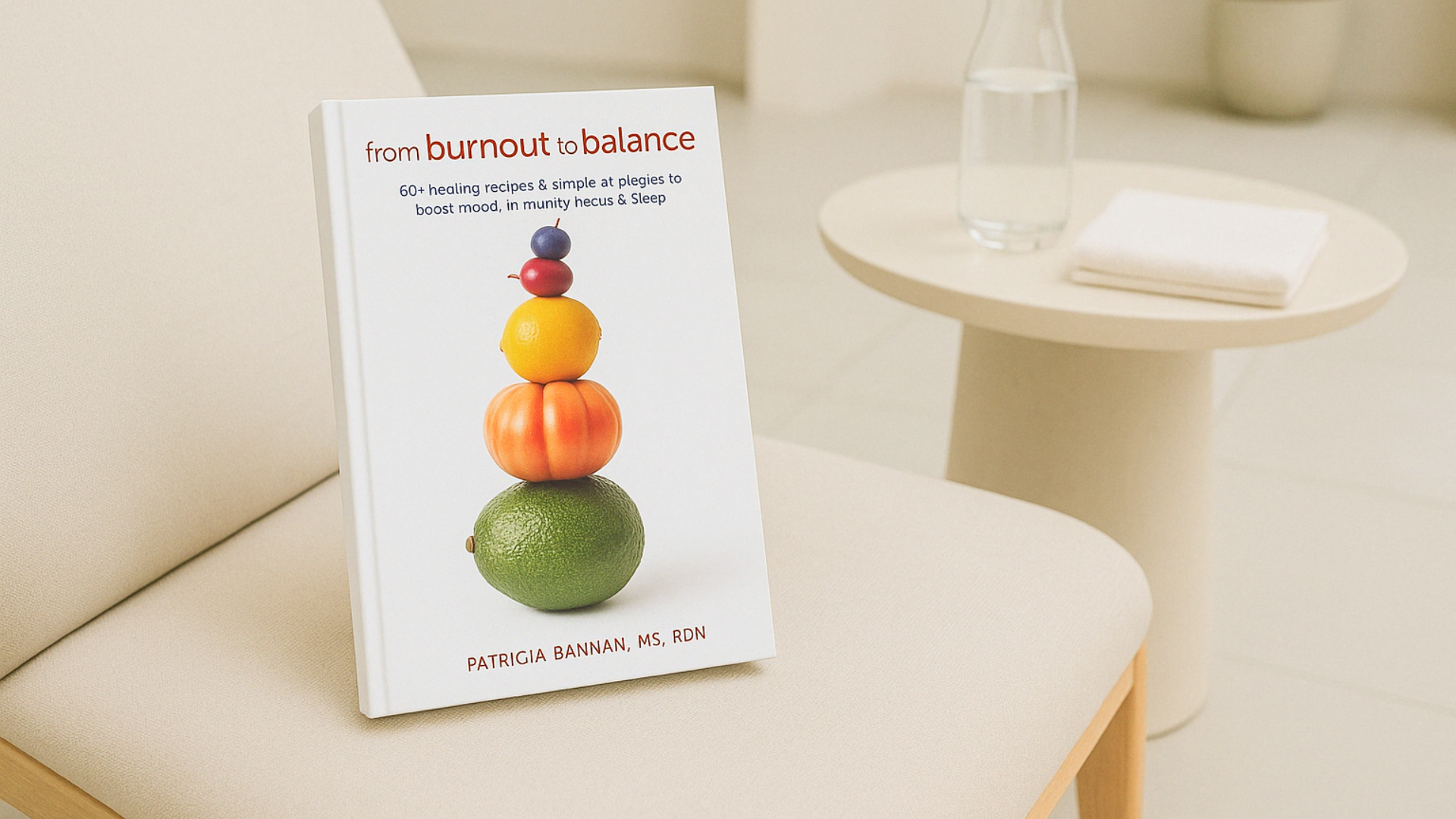How to Gently Heal From Burnout Through Food and Self-Care

Book Review: From Burnout to Balance by Patricia Bannan
A nurturing blend of recipes, rituals, and mindset shifts for women seeking calm, clarity, and nourishment from within
In From Burnout to Balance, Patricia Bannan, a registered dietitian nutritionist, weaves together personal reflection, science-informed wellness strategies, and 60 calming recipes to help readers reduce stress, feel more energized, and create meaningful habits. Rather than pushing productivity or promising a total reinvention, Bannan gently encourages a return to balance through food, movement, sleep, and joy. Her approach feels especially relevant for women in high-demand roles who have spent years managing invisible loads.
What the book promises
This book offers a holistic framework to support well-being in times of overwhelm. Bannan outlines five key areas for creating balance: mood, energy, cravings, focus, and sleep. Each section integrates science-backed information with personal storytelling, everyday rituals, and whole-food recipes. The promise here is both practical and restorative. It’s not about hacking your health or becoming your most productive self. It’s about tuning in and tending to your body and mind with intention.
Bannan writes with the understanding that burnout is not a personal failing, but often a natural response to modern life’s relentless pace. She positions nourishment as a form of care rather than control, and food as a bridge back to presence.
What the book delivers
The structure of the book is refreshingly balanced. Each chapter focuses on one aspect of wellness, grounding its content in current nutritional science without becoming clinical or overwhelming. Bannan includes check-in prompts, journaling questions, and reflection activities that make the material feel engaging and personal. She invites the reader into a conversation rather than a lecture.
Her recipes are straightforward and approachable, focusing on whole, nutrient-dense ingredients. Rather than overwhelm with complex food plans, she offers ideas that can be incorporated gradually. The recipes are categorized by the type of support they offer: mood stabilizers, energy boosters, brain enhancers and each one comes with thoughtful context. There’s a real sense that these dishes were developed with care, not just for their nutritional value but for how they might soothe a tired or scattered nervous system.
Throughout, Bannan’s tone is calm and gently reassuring. She writes like someone who has both studied this material and lived it, and she shares personal experiences of burnout that many readers will likely recognize in their own lives. Her stories bring credibility, but more importantly, they create connection.
Style and structure
The design of the book is visually calming and intuitive to navigate. There is a spaciousness to the layout that invites slower reading and mindful integration. Chapters are cleanly divided, and each follows a rhythm that combines science, story, suggestion, and sustenance.
Bannan avoids jargon and uses plain language that is accessible without being simplistic. The voice is warm, grounded, and free of the kind of cheerleading that sometimes appears in wellness books. She does not preach. She holds space. Her writing style suits the audience well; especially women who are well-read, busy, and carrying a lot, but are still looking for ways to feel more like themselves again.
Where the book shines
The true strength of From Burnout to Balance lies in its permission-giving tone. Bannan doesn’t ask readers to overhaul their lives or adhere to a strict regimen. Instead, she encourages them to make space for gentle shifts, small joys, and intuitive nourishment.
Her inclusion of emotional wellness in a nutrition-focused book is particularly noteworthy. She acknowledges the role of stress, social connection, rest, and emotional depletion in a person’s overall health, and treats those domains as just as important as dietary choices. This integrated approach makes the book feel relevant and deeply human.
The check-in tools sprinkled throughout the book are practical and compassionate. They help readers tune in without judgment, and they build the kind of self-awareness that leads to sustainable change. Readers who tend to think of health in binary terms, success or failure, will likely find comfort in Bannan’s nuanced, non-performative guidance.
Light limitations
Some readers may wish for more specific guidance on tailoring the strategies to different capacities. While the tone is consistently inviting, the amount of content can feel a bit full for someone who is already burned out. A few summaries or simplified entry points per chapter might help readers who are struggling with fatigue or decision fatigue.
Additionally, while the recipes are nourishing and beautifully presented, they may not feel accessible to readers with limited time, energy, or kitchen experience. Including more ideas for batch-cooking, substitutions, or ultra-simple staples could expand the book’s reach even further.
Still, these are gentle critiques. The heart of the book remains intact: it’s not about doing everything, it’s about finding what feels doable and nourishing in this season of life.
Final thoughts
From Burnout to Balance is a tender and intelligent guide for women navigating the disorienting effects of modern burnout. Patricia Bannan offers more than nutrition advice; she offers a philosophy of care, one that blends science, intuition, and self-compassion in a format that is both beautiful and functional.
This is not a book of rules. It’s a book of possibilities. It reminds readers that feeling better doesn’t start with self-improvement. It starts with listening, softening, and honouring the signals that the body has been sending all along.
Highly recommended for women who crave a restorative path back to themselves, not through discipline, but through care, curiosity, and connection.